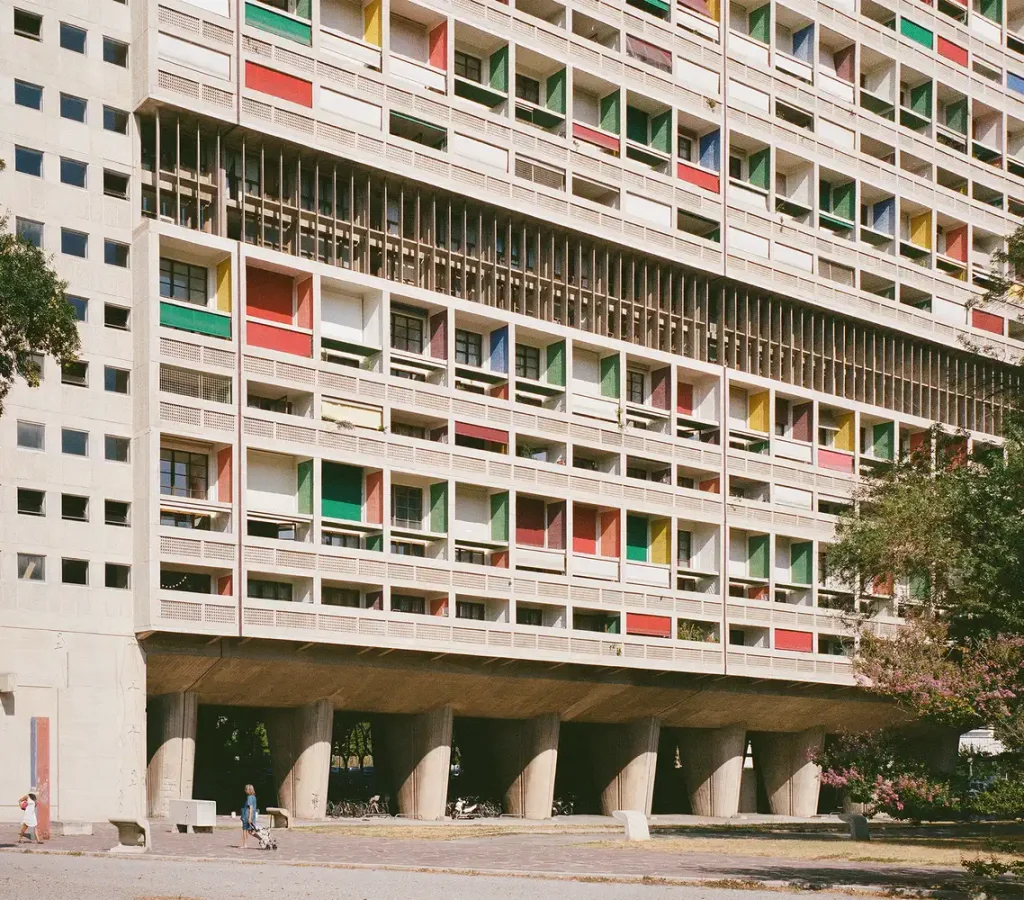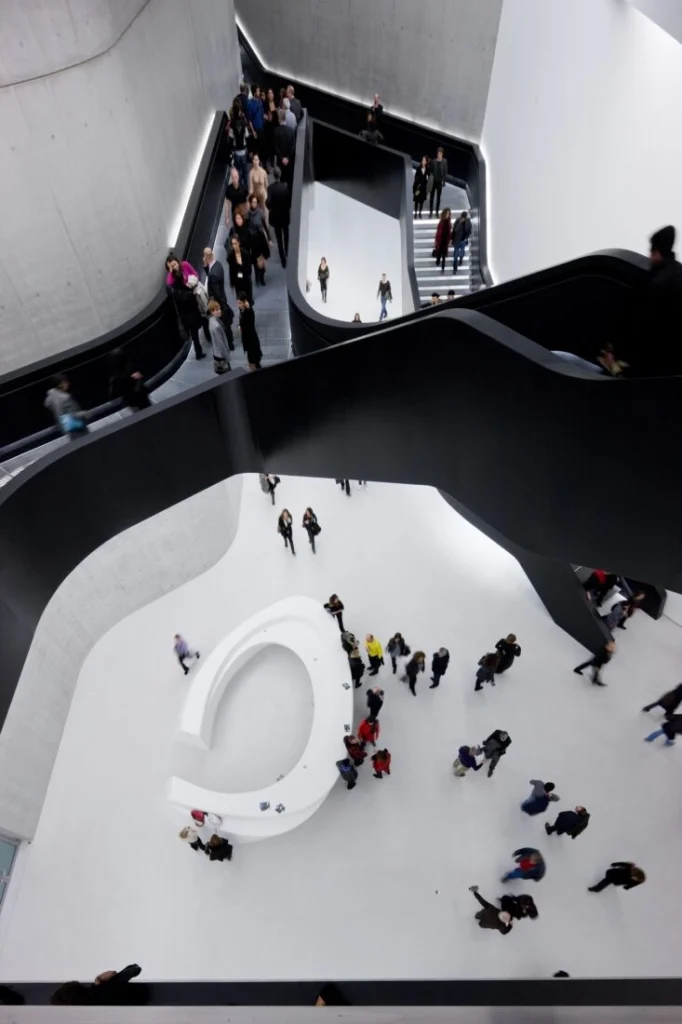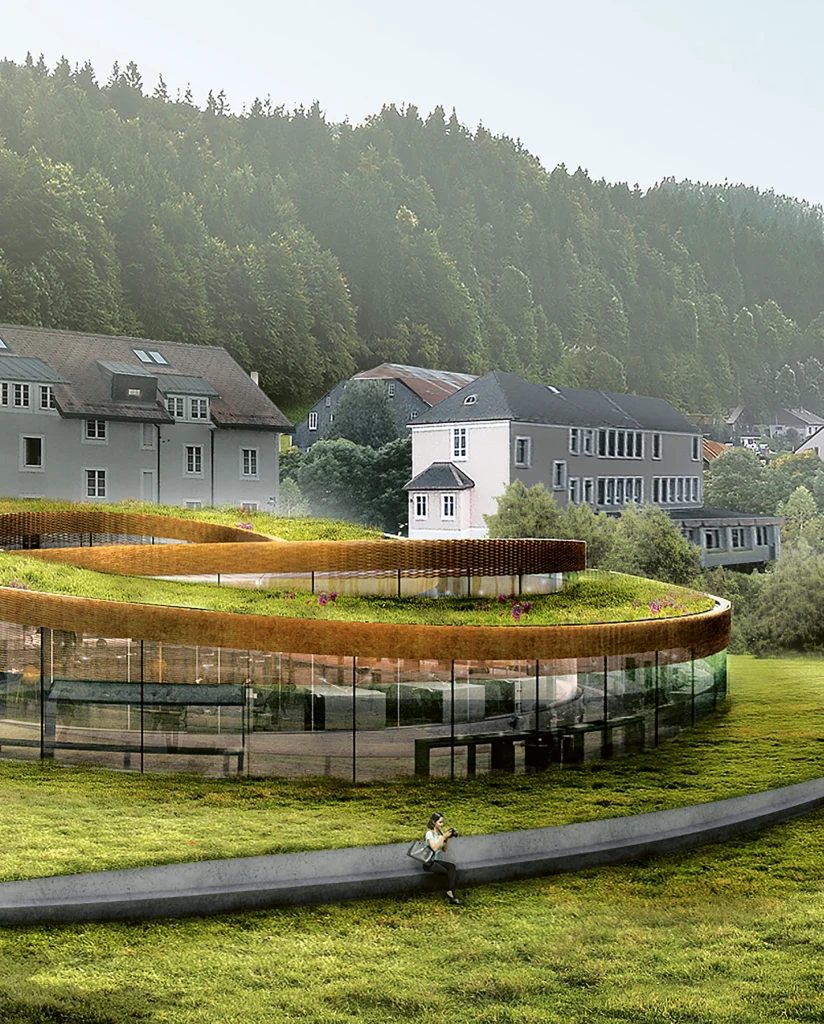Fame is a curious phenomenon; it transcends personal taste and subjective opinion. For example, not everyone is a fan of Michael Jackson, but his influence on music and pop culture is indisputable. Similarly, architectural visionaries may not have created everyone’s dream buildings, but they challenged the norms and inspired new ways of thinking. With big ideas and distinct philosophies, some architects have crafted spaces defining eras, cultures, and the essence of human experience. They have eternally etched their names in history, so this exploration will highlight 8 famous architects whose legacy reflects their profound contributions to architecture.
Le Corbusier (1887 – 1965)


In Switzerland, Charles-Édouard Jeanneret-Gris (later went by Le Corbusier) trained in watchmaking before studying under René Chapallaz and shifting to architecture. Throughout Europe he traveled and drew inspiration from historical monuments, particularly the Parthenon in Greece, which deeply influenced his sense of proportion and harmony. He became the father figure of Modernism and introduced its pillars famously known as the Five Points of Architecture: pilotis, flat roofs, open floor plans, horizontal windows, and free façades.
His design philosophy emphasized functionality and the integration of modern technology as he was among the first to view buildings as “machines for living”. He’s the founder of the International Style, so if you’re wondering who we have to credit for our annoyingly low apartment ceilings it’s him – no hard feelings.
Notable projects include Villa Savoye in France, which epitomizes his modernist ideals with its sleek lines and integration with nature. Unité d’Habitation in Marseille, is a groundbreaking example of Brutalist architecture that redefined social housing with its innovative mixed-use spaces.
Louis Kahn (1901 – 1974)


Born in Estonia and raised in Philadelphia, Louis Kahn is famous for his monumental and poetic approach to architecture. After formally studying at the University of Pennsylvania, he developed a sensible design philosophy combining modernism and history. Ancient ruins inspired his use of mass and void, light and shadow, so ultimately, his spaces evoked timelessness and spirituality.
Kahn was a firm believer in revealing the inner truth of materials with his signature heavy geometric forms that exude a sense of transience. His influence on architecture lies in seamlessly merging modernist principles with a deep appreciation for history and the overall human experience. In a way, his designs possess a contemplative quality that draws people in.
On top of his notable projects is the Salk Institute in California, a serene research facility that masterfully uses light and space to inspire creativity. Most known for its iconic water line that links the courtyard to the sea view. On timeless spirituality, The National Assembly Building in Dhaka, Bangladesh, is a masterpiece of geometric precision. Kahn skillfully employed light and shadow to create a monumental and serene civic space.
Oscar Niemeyer (1907 – 2012)


Famously known as the master of sensual concrete poetry, Oscar Niemeyer studied at the Escola Nacional de Belas Artes before becoming a key figure in shaping Brazil’s architectural identity. His design philosophy, or rather muse, revolves around the beauty of curves, which in turn is inspired by Brazil’s landscape.
He was an innovator, taking the most rigid material, reinforced concrete, and painting gravity-defying structures with it – that stood the test of time. His approach to architecture went global, as he introduced a new language of form that was expressive and free. Not only were his designs free, but also his beliefs in designing public spaces for the community with a social purpose.
Notable projects include Brasília, Brazil’s capital, where Niemeyer designed iconic structures like the Cathedral of Brasília, a futuristic building that creates a sense of lightness and openness. Also, the Niterói Contemporary Art Museum in Brazil features a dramatic form that appears to float above its cliffside location and seamlessly blend with the landscape.
Frank Lloyd Wright (1867 – 1959)


American-born Frank Lloyd Wright is one of the most famous architects of the 20th century. After studying at the University of Wisconsin, he relocated to Chicago to work under Louis Sullivan. This shift hugely impacted his design philosophy to adopt an organic architecture that harmoniously integrates with nature rather than dominates it. This principle guided his design and led to his trademark use of natural materials, open floor plans, and a seamless connection between indoor and outdoor spaces.
His impact on architecture is undeniable, and one of his most prominent quotes is that “every great architect is necessarily a great poet. He must be a great original interpreter of his time, day, and age.” This perfectly highlights Wright’s belief that architects should create designs that reflect the spirit and values of the era in which they live. He emphasized creating a blend between innovation and cultural relevance.
His most famous project is Fallingwater in Pennsylvania, a house built over a waterfall that epitomizes his organic principles. Another notable example is The Guggenheim Museum in New York. With its innovative spiral form and continuous ramp gallery, this building redefined the museum experience and offered a fluid space that encourages exploration.
Norman Foster (1935 – Present)


Born in Manchester, England, Norman Foster is a leading figure in contemporary architecture. After studying at the University of Manchester and later Yale University, he developed a design philosophy that merges sustainability, innovation, and technology. With his high-tech approach, advanced engineering solutions, and environmental considerations, Foster revolutionized the way architecture is built for generations to come.
To this day, alongside his team, his design philosophy pushes the edge of technology and marries engineering with architecture seamlessly. He is a master at creating elegant forms that address the sustainable needs of the future.
Of his countless notable projects, 30 St Mary Axe in London, also known as “The Gherkin,” is a pioneering example of sustainable architecture with its energy-efficient design and curvaceous form that enhances natural ventilation. Another example is the Millau Viaduct in France, the world’s tallest bridge. It showcases Foster’s engineering prowess and elegance as it blends seamlessly with the surrounding landscape.
Tadao Ando (1941 – Present)


Before finding his passion for architecture, Japanese-born Tadao Ando was a professional boxer. After traveling around, he discovered an undying love for buildings, so he took it upon himself to learn architecture without formal education, which is really impressive. Arguably, his experience in boxing helped him develop a quiet fighting spirit and stoic perseverance which later became his strengths as an architect.
His design philosophy is deeply rooted in the Japanese tradition of simplicity and harmony with nature. Raw concrete, natural light, and spatial emptiness are his signature elements, with which he creates serene, contemplative spaces that evoke tranquility. He influenced the minimalist movement in architecture and continues to inspire generations with his reflective spatial poetry.
It’s hard to highlight two of his projects, but the Church of Light in Osaka exemplifies his work. Its design is simple yet deep, with a cruciform cut in the concrete wall allowing natural light to create a powerful ambiance, symbolizing the intersection of light and faith. Another notable example is the Naoshima Art Museum, located on a small Japanese island. It’s a masterful fusion of minimalism and nature, where concrete forms emerge gently from the earth and blur the boundaries between man-made and natural.
Zaha Hadid (1950 – 2016)


Born in Baghdad, Iraq, Zaha Hadid’s initial education was in Mathematics at the American University of Beirut. That clearly shaped her unique design approach before studying architecture at the Architectural Association in London. She redefined contemporary architecture with her radical yet fluid futuristic designs.
Hadid’s design philosophy revolved around fragmentation, fluidity, and the use of dynamic forms that defied conventional architectural norms. Her impact on architecture is monumental, and eventually earned her a Pritzker Prize in 2004. Fun fact, she was the first woman to win this award so it was also a milestone for women in the architectural field.
One of her most notable projects is the MAXXI Museum in Rome. With its spatial flow, this project challenges the traditional notions of museum space and creates a dynamic visitor experience. Another iconic project is The Heydar Aliyev Center in Baku, Azerbaijan. With its wave-like form, the building creates an organic space that defies traditional geometry and blurs the line between architecture and sculpture.
Bjarke Ingels (1974 – Present)


One of the most famous architects in the current contemporary scene is Bjarke Ingels. Born in Denmark, he studied at the Royal Danish Academy and the Technica Superior de Arquitectura in Barcelona. Ingels first gained attention by winning design competitions with PLOT Architects, and after this company disbanded, he founded Bjarke Ingels Group (BIG) in 2005.
His blend of form and function, incorporation of unconventional shapes, and buildings that are both visually and functionally striking quickly rose BIG to fame. Ingles describes his philosophy as “pragmatic utopianism,” which essentially combines sustainability, innovation, and social impact. The charm of his buildings lies in his ability to make architecture accessible, functional, and highly experiential.
The project that launched his fame is 8 House in Copenhagen, a residential complex that combines urban and communal living. Its unique 8-form design allows the continuous flow of bike and pedestrian paths throughout the building. The Audemars Piguet Museum in Switzerland (completed in 2020) stands out from his most recent projects. The building spirals gracefully into the landscape and harmonizes with the Vallée de Joux’s rolling hills. Its glass walls and flowing design elegantly showcase the fusion of nature and watchmaking artistry.





















Hi, definitely the selection, interesting indeed, is for Architects born before 1950, I would have included Richard Meier or Moshe Safdie instead of the last one, which is certainly younger than the other 7 ones and present as well a selection of 8 from that newer generation which is less publicized. Great article.
I think you should have included Frank Gehry. Who would you eliminate? I don’t know.
He brought us into the digital age.
When the Guggenheim was completed in Bilbao it was a powerful image, a facade of computer generated forms and shapes made of titanium, limestone and glass.
The design development was long and hard & to be able to do it and create an exact document for design and construction he crossed that threshold from hand and brain to: hand and brain and digital technology. The first building to ever utilize a computer in this new way.
This was an earth shaking event! Architecture had been changed for ever!
randall